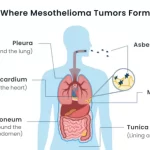
Structural Bioinformatics
May 17, 2023Structural bioinformatics is a multidisciplinary field that studies and analyses the three-dimensional (3D) structures of biological macromolecules such as proteins, nucleic acids, and complex assemblies using ideas from biology, biochemistry, computer science, and mathematics.
The field is concerned with determining the link between biomolecule structure, function, and dynamics. It entails predicting, modelling, analysing, and comparing protein structures using computational methods and algorithms. Structural bioinformatics uses a variety of methodologies to acquire insights into the atomic-level features of biomolecular structures, such as molecular modelling, molecular dynamics simulations, and structure prediction tools.
The primary goals of structural bioinformatics are as follows:
Structure Prediction: Using computational approaches to predict the 3D structure of biomolecules when experimental structure identification is difficult or impossible. This comprises methods such as homology modelling, ab initio modelling, and fold identification.
Structure determination is the process of determining the 3D structure of biomolecules by analysing experimental data using techniques such as X-ray crystallography, nuclear magnetic resonance (NMR) spectroscopy, and cryo-electron microscopy (cryo-EM). Data processing, refining, and validation are all part of this process.
Structure Analysis: The study and analysis of biomolecule structural characteristics, properties, and interactions. Identifying active sites, binding interfaces, functional domains, and structural motifs is part of this process. It also includes the investigation of protein-ligand, protein-protein, and protein-nucleic acid interactions.
Inferring the function and biological importance of biomolecules based on structural features such as active site residues, ligand binding sites, and structural similarities to other known proteins with documented activities.
Drug Design and Discovery: The use of structural information to aid in the design and optimisation of small compounds for use as potential medications. This includes virtual screening, docking, and molecular dynamics simulations to anticipate and analyse drug-target protein interactions.
Understanding the molecular mechanisms underpinning biological processes, drug development, and personalised treatment all rely on structural bioinformatics. It sheds light on protein structure-function correlations, protein-protein interactions, and the effect of genetic variants on protein structures. Structural bioinformatics contributes to advances in biology, biochemistry, and medicine by merging experimental data and computational techniques.
Protein structure prediction and modeling
Prediction and modelling of protein structure are computational techniques used to generate three-dimensional (3D) models of protein structures. Due to the close relationship between a protein’s 3D structure and its function, protein structure prediction is essential for comprehending protein behaviour, interactions, and biological roles. Here are the principal protein structure prediction methods:
Homology Modeling/Comparative Modelling: When a homologous protein with a known structure (template) is available, homology modelling is a popular method for protein structure prediction. This method is based on the observation that proteins with similar sequences share structural and functional similarities. Aligning the target protein sequence with the template structure, constructing a model by transferring the template’s coordinates, and optimising the model’s quality are the steps involved in this process. When the sequence similarity between the target and template proteins is high, homology modelling is most accurate.
Ab Initio (De Novo) Prediction: The objective of ab initio methods is to predict protein structures from inception, without using known structures or templates. Utilising physical principles, statistical potentials, and energy functions, these techniques investigate the conformational space of a protein and predict its three-dimensional structure. Due to the enormous number of possible conformations and the computational complexity involved, ab initio prediction is difficult. It frequently employs simplified representations of protein structures and sampling techniques to efficiently investigate the conformational landscape.
Fold Recognition/Template-Based Methods: The goal of fold recognition methods is to identify proteins with similar folds to the target protein, even in the absence of significant sequence similarity. These techniques employ algorithms including threading, profile-profile alignment, and hidden Markov models to search databases for proteins with similar structures. Once a suitable template has been identified, it can be used to generate a 3D model of the target protein by aligning the target sequence with the structure of the template and transmitting the coordinates.
Hybrid Methods: Hybrid methods incorporate multiple approaches, including homology modelling and ab initio techniques, to increase the precision and coverage of protein structure prediction. Using experimental data, evolutionary information, and physical principles, these methods generate more reliable models.
Model Refinement and Validation: Following the generation of an initial protein structure model, refinement techniques are utilised to enhance the model’s precision and quality. This could entail energy minimization, simulations of molecular dynamics, or optimisation algorithms to refine atomic coordinates and eliminate steric clashes. Using validation tools such as Ramachandran plots, which indicate the sterically allowed regions of the protein backbone, and various statistical potentials that measure the quality and reliability of the model, the quality of the predicted model is evaluated.
Methods for predicting the structure of proteins have made significant strides in recent years due to advances in computational algorithms, data accessibility, and experimental techniques. Predicting precise protein structures remains difficult, particularly for large and complex proteins. Increasingly, experimental data, such as cryo-electron microscopy (cryo-EM) or nuclear magnetic resonance (NMR), are combined with computational modelling techniques to enhance the precision and resolution of predicted protein structures. These predicted structures are valuable resources for comprehending protein function, drug discovery, and the development of novel therapeutic strategies.
Protein-ligand docking and virtual screening
In drug discovery and design, protein-ligand docking and virtual screening are computational techniques used to predict and analyse the binding interactions between small molecules (ligands) and proteins. Identifying potential drug candidates and comprehending the molecular basis of ligand-protein interactions rely heavily on these techniques. Let’s delve into these techniques:
The process of predicting the optimal binding conformation and binding affinity between a protein receptor and a small molecule ligand. Docking algorithms investigate the three-dimensional space of the protein and ligand in order to identify the most favourable binding pose based on a variety of scoring functions. These scoring functions assess the complementarity between the ligand and protein, taking into account factors like shape, electrostatics, hydrogen bonding, and hydrophobic interactions. Docking algorithms frequently employ search algorithms, such as Monte Carlo or genetic algorithms, to sample the conformational space and identify the optimal fit between ligand and protein.
Virtual screening is a computational technique used to search large chemical databases and rank potential ligands for a specific protein target. Utilising docking or other scoring techniques to predict the binding affinities of multiple ligands, it entails the rapid evaluation of multiple ligands. Virtual screening can be conducted using two primary methods:
a. Virtual Ligand-Based Screening: Ligand-based virtual screening identifies potential matches based on the similarity between known active ligands and the query ligand. This method compares the properties of known active ligands with those of the compounds in the database using various molecular descriptors, such as chemical fingerprints, pharmacophore models, and quantitative structure-activity relationship (QSAR) models.
b. Virtual Structure-Based Screening: In structure-based virtual screening, a library of small molecules is docked into the binding site of the target protein to predict their binding affinity. Based on their docking scores or other scoring functions, the compounds are ranked. This method identifies novel compounds with potential activity against the target without requiring prior knowledge of known active ligands.
Virtual screening can considerably reduce the number of compounds that must be tested experimentally, thereby speeding up the drug discovery process and lowering costs.
The binding modalities, interactions, and binding affinities between proteins and ligands are illuminated by these computational techniques. They allow for the identification of prospective drug candidates, the optimisation of lead compounds, and the comprehension of the structure-activity relationship (SAR) for drug design. In addition, protein-ligand docking and virtual screening are indispensable for investigating a vast chemical space and guiding experimental studies, thereby facilitating the development of new drugs and therapeutics.

















